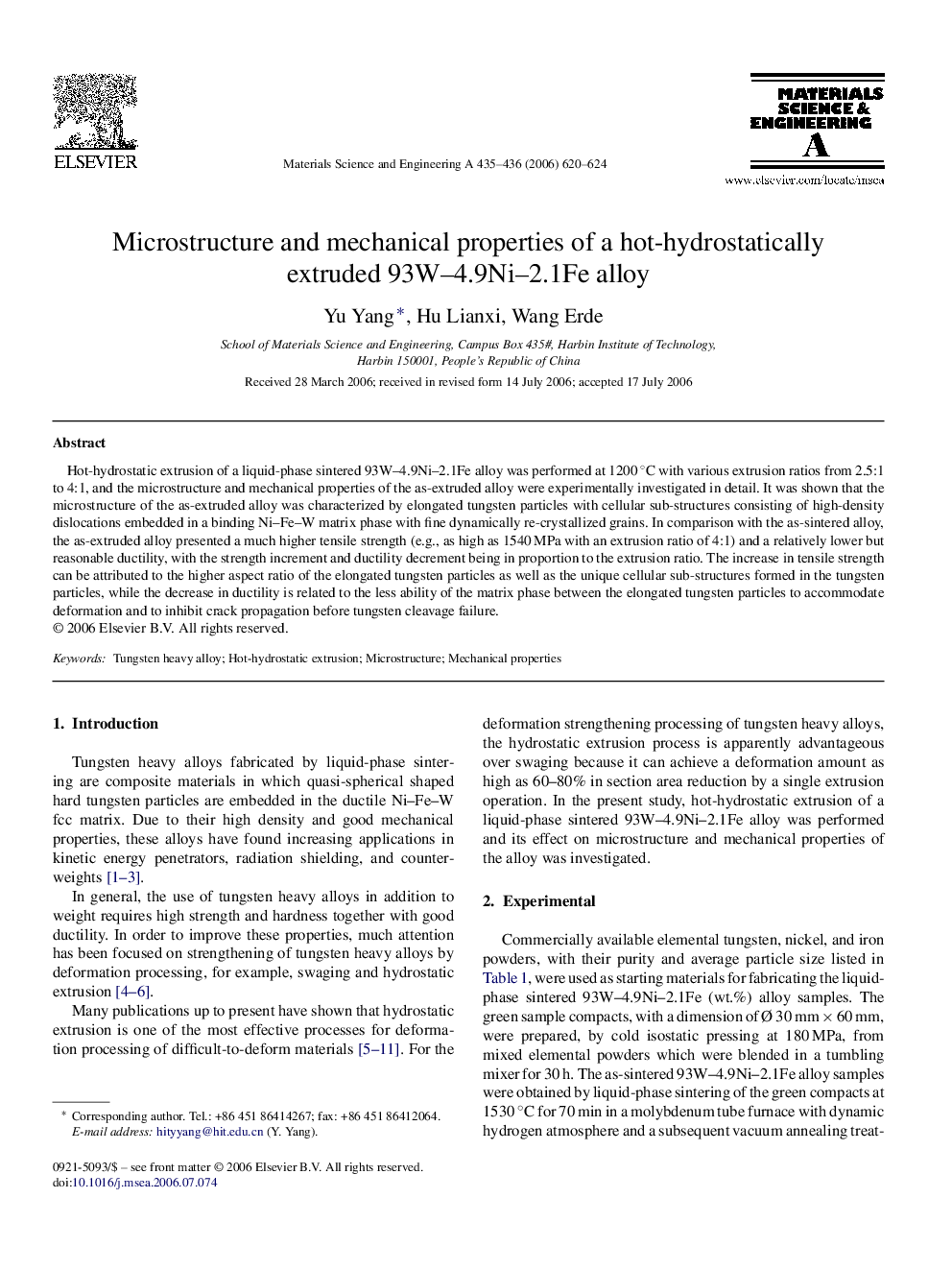| Article ID | Journal | Published Year | Pages | File Type |
|---|---|---|---|---|
| 1585178 | Materials Science and Engineering: A | 2006 | 5 Pages |
Hot-hydrostatic extrusion of a liquid-phase sintered 93W–4.9Ni–2.1Fe alloy was performed at 1200 °C with various extrusion ratios from 2.5:1 to 4:1, and the microstructure and mechanical properties of the as-extruded alloy were experimentally investigated in detail. It was shown that the microstructure of the as-extruded alloy was characterized by elongated tungsten particles with cellular sub-structures consisting of high-density dislocations embedded in a binding Ni–Fe–W matrix phase with fine dynamically re-crystallized grains. In comparison with the as-sintered alloy, the as-extruded alloy presented a much higher tensile strength (e.g., as high as 1540 MPa with an extrusion ratio of 4:1) and a relatively lower but reasonable ductility, with the strength increment and ductility decrement being in proportion to the extrusion ratio. The increase in tensile strength can be attributed to the higher aspect ratio of the elongated tungsten particles as well as the unique cellular sub-structures formed in the tungsten particles, while the decrease in ductility is related to the less ability of the matrix phase between the elongated tungsten particles to accommodate deformation and to inhibit crack propagation before tungsten cleavage failure.
